For this option, the user is guided through a three-step form (three Tabs of the Activation by E-mail dialog window). During the first two steps he/she prepares information needed to obtain HYDRUS Authorization and emails it to the HYDRUS distributor. In the third step, user enters the Activation Code that he receives by e-mail on the third Tab (Step 3) of the Activation by E-mail and activates HYDRUS.
The first step is to fill in information about the license (License Number), the name of the license owner (Customer), and description of the Workspace (WP Description). This last item (i.e., WP Description) serves for future identification of a particular computer in the electronic licensing system and is usually characterized by a user or its location (e.g., John - Laptop, Harry - Lab 001).
In the section Required Authorization select the required HYDRUS Level to Activate (i.e., 2D-Lite, 2D-Standard, 3D-Lite, 3D-Standard, or 3D-Professional; please note that this Level has to correspond with the purchased Level) and the Type of License to activate (e.g., Time-Limited Authorization with the Expiration Date, or the Network Installation with the Number of Clients). If no check box is selected, a Time-Unlimited Single User License is authorized. With regard to a possible loss of authorization due to failure of hardware, it is recommended to choose a shorter period of validity (default is 0.5 years).
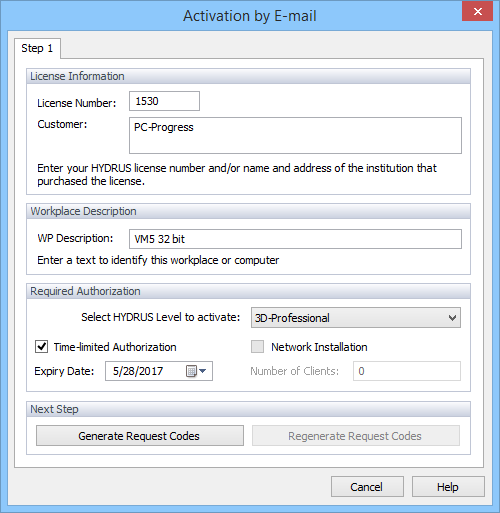
The Activation by E-mail dialog window (Tab Step 1).
After clicking on the Generate Request Codes button on Tab Step 1 of the Activation by E-mail window, user is prompted to
confirm all entered information and then the Tab Step 2 appears.
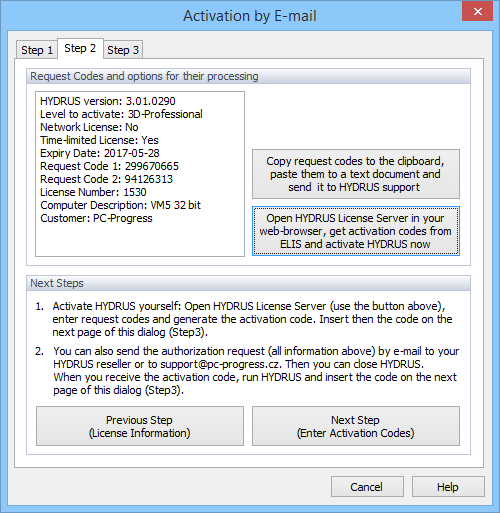
The Activation by E-mail dialog window (Tab Step 2).
Information entered during Step 1 (on Tab Step 1) is summarized in the Authorization Request Codes section of the Step 2 Tab. This information can be copied to the clipboard using the Copy to Clipboard button and then sent by email to the HYDRUS support or other HYDRUS distributors. The command Send Request Codes by E-mail will attempt to start emailing program (e.g., Microsoft Outlook) directly and copy there automatically an email address of the HYDRUS support (support@pc-progress.cz) and all required information (see an example of such email displayed in Outlook).
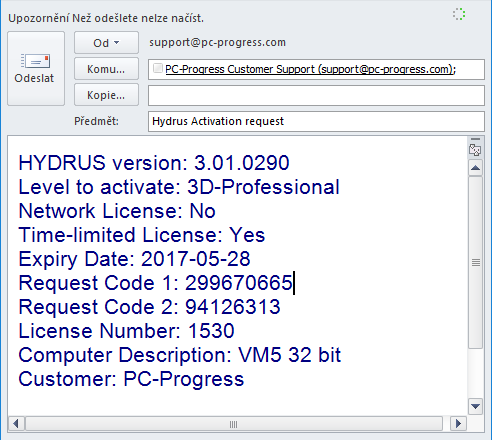
Email with the HYDRUS Activation Request in Outlook.
On the basis of this information, the HYDRUS support or other resellers will promptly email back the Activation Code.
Notes on Request Codes
When starting unauthorized HYDRUS again, user is informed that request codes have recently been generated and if he/she wants to enter the Activation Code and activate HYDRUS. It is important not to regenerate request codes at this time as the Activation Code would then not be active any more, since one of the request codes would be changed.
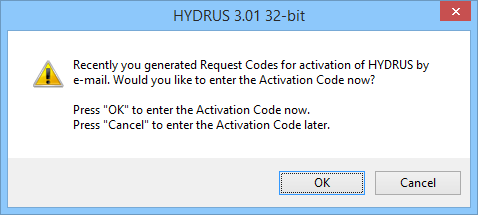
Window inquiring if the user wants to enter the Activation Code.
After receiving the Activation Code, enter this code on the Step 3 Tab of the Activation by E-mail dialog window and click on the Activate Now button. You should receive a confirmation that the authorization process was successful.

The Activation by E-mail dialog window (Tab Step 3).
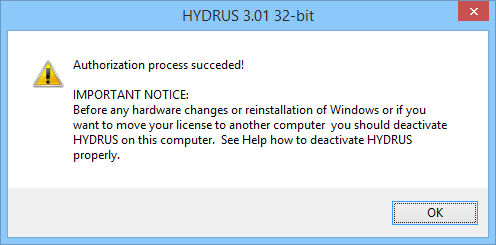
Window confirming successful HYDRUS authorization.
Note that the Request Code and a Computer ID are displayed in the upper part of the Step 3 Tab. Remember that your Request Code and Computer ID are hardware-dependent. After upgrading your hardware (e.g., BIOS, hard drives), you will very likely have to request new Activation Code. You are eligible to obtain those codes for free (although subject to some limitations - ask for details).
When the activation fails three times (likely due to incorrectly entered information), the request keys will change and windows shown below will be displayed, providing instructions on how to proceed further. User will be requested to send a report to the HYDRUS support, so that the cause of the problem can be analyzed.
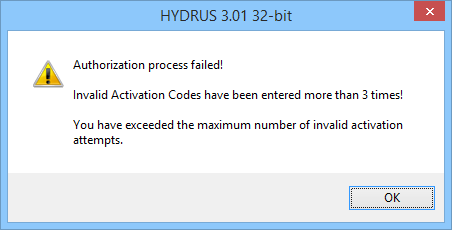
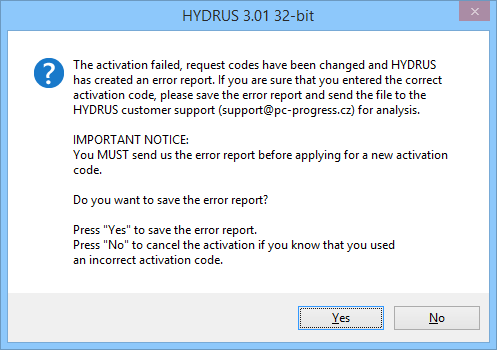
Window reporting a failure of HYDRUS authorization.
Other related topics:
Brief Description of HYDRUS Activation
Reinstallation, Moving to Another Computer
Network installation of HYDRUS